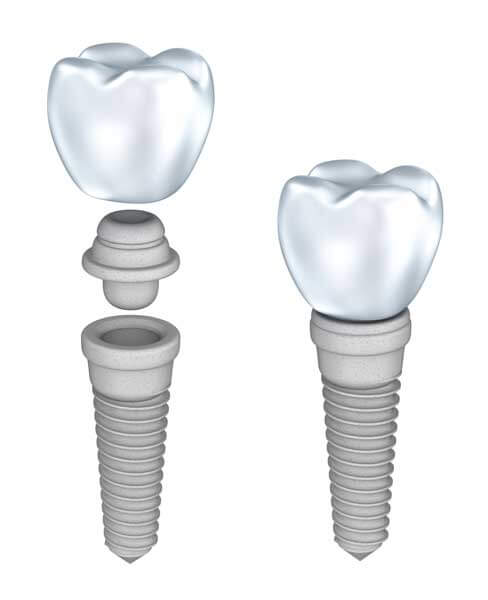Oral Surgery Procedures in Germantown, MD

Dental Implants

Dental implants are the replacement of tooth roots in the mouth. Implants provide a strong foundation for fixed or removable replacement teeth. Dental implants are anchors made of biocompatible metal called titanium, which are placed in the jawbone. This same titanium also works well in other parts of the body including knees and hips.
The anchors begin to fuse with the bone over a few months. After the fusing process, known as osseointegration, permanent teeth are made to fit over the implant.
Wisdom Tooth Removal (3rd Molars)

A wisdom tooth that is deemed problematic is normally extracted to avoid any oral complications. To have a wisdom tooth removed, a small incision is made to open up the gum tissue over the tooth and remove any bone that is covering the tooth. Once the tooth is in view, it is gently grasped with a dental instrument, known as a forcep, and gently rocked back and forth to loosen it from the jaw bone and surrounding ligaments. Sometimes the tooth may need to be cut into smaller pieces to make it easier or removal. Stitches may be necessary after the removal of a wisdom tooth.
Impacted Tooth & Tooth Exposure

An impacted tooth is a tooth that fails to fully pass through the gums for various reasons.
Impacted wisdom and cuspid (or canine) teeth are fairly common. To correct impacted teeth, there are a few treatment options. For impacted wisdom, the most common procedure is extraction. For impacted canine teeth, several treatment modalities are available. Treatment can involve orthodontics (braces) to allow open spaces for proper eruption, a visit to the oral surgeon to remove over retained primary (baby) teeth or to surgically expose the tooth and place an orthodontic bracket to help bring it down into proper alignment.
Bone Grafting

Bone grafting is the replacement or enhancement of bone around teeth. When a tooth is lost, the surrounding bone collapses. Bone grafting is performed to reverse bone loss or enhance existing bone. The grafting material can be taken from parts of the body or from synthetic material. Bone grafting allows for proper support of dental implants or prostheses.
Orthognathic Surgery

Orthognathic surgery is done to correct misalignments or other abnormalities in the upper and/or lower jaw.
Orthognathic surgery can involve procedures such as an osteotomy (bone cutting), bone grafts, or distraction osteogenesis (stretching of the bone) and orthodontic (braces) care. Orthognathic correction is conducted in stages, and the course of treatment can last from a few months to a year or more.
In order to perform the procedure successfully, the jawbones will be repositioned in accordance with one’s specific needs. Inconspicuous incisions are usually made inside, and if needed, outside the mouth to allow for surgical plates, screws, wires and rubber bands to be used to hold your jaws in their new positions.
Sinus Lift

A sinus lift is a surgery that adds bone to your upper jaw in the premolar and molar areas of your mouth. To add bone, an incision is made where the premolar and molar teeth were previously located. Once the bone is exposed, a small circular shape is made in the bone to access the sinus. Once the sinus is accessed, the sinus membrane is gently pushed up and away from the upper jaw. Once this is done, bone graft material is placed into the sinus space to change the shape and provide support. Once the bone is in place, the incision is closed and the healing process begins.
